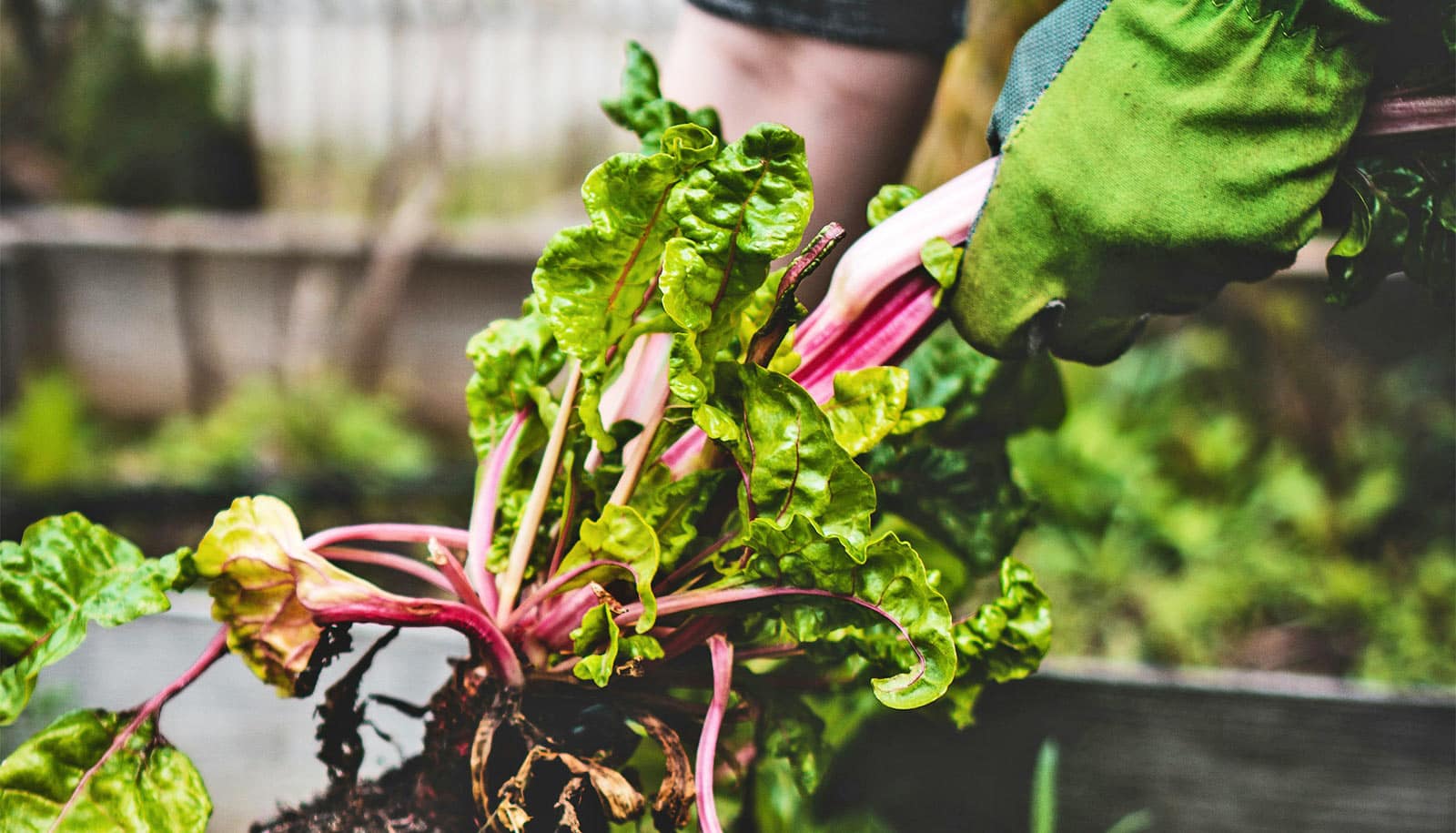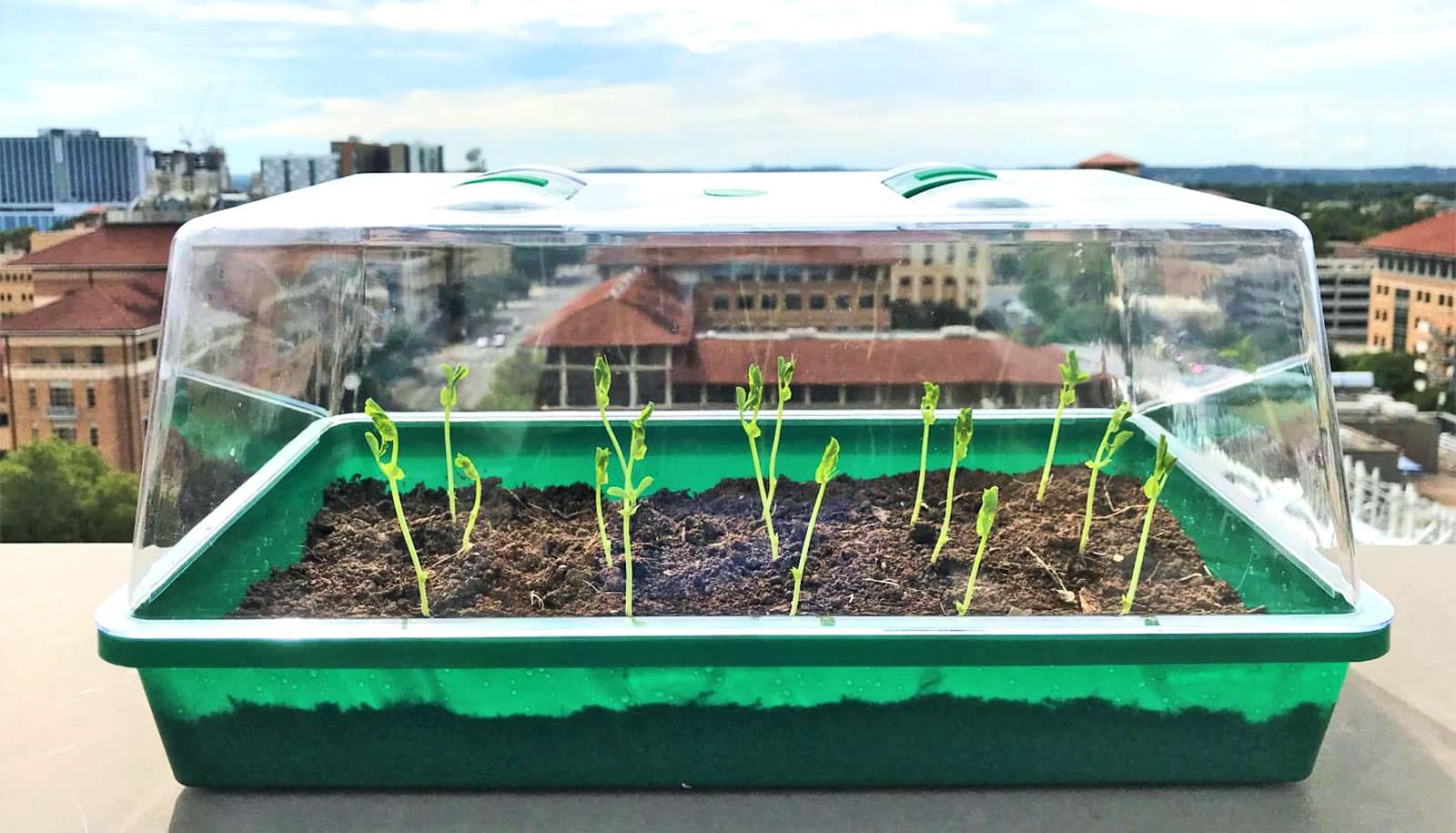
"Urban agriculture offers a variety of social, nutritional, and place-based environmental benefits, which make it an appealing feature of future sustainable cities," says Jason Hawes. "This work shines light on ways to ensure that urban agriculture benefits the climate, as well as the people and places it serves." (Credit: Jonathan Kemper/Unsplash )
Produce from urban farms has 6X larger carbon footprint
Fruits and veggies from urban farms and gardens have a carbon footprint that is, on average, six times greater than conventionally grown produce.
Fruits and vegetables grown in urban farms and gardens have a carbon footprint that is, on average, six times greater than conventionally grown produce.
However, a few city-grown crops equaled or outperformed conventional agriculture under certain conditions. Tomatoes grown in the soil of open-air urban plots had a lower carbon intensity than tomatoes grown in conventional greenhouses, while the emissions difference between conventional and urban agriculture vanished for air-freighted crops like asparagus.
“The exceptions revealed by our study suggest that urban agriculture practitioners can reduce their climate impacts by cultivating crops that are typically greenhouse-grown or air-freighted, in addition to making changes in site design and management,” says Jason Hawes, a doctoral student at the University of Michigan’s School for Environment and Sustainability and co-lead author of the study in the journal Nature Cities .
“Urban agriculture offers a variety of social, nutritional, and place-based environmental benefits, which make it an appealing feature of future sustainable cities. This work shines light on ways to ensure that urban agriculture benefits the climate, as well as the people and places it serves.”
Urban agriculture, the practice of farming within the confines of a city, is becoming increasingly popular worldwide and is touted as a way to make cities and urban food systems more sustainable. By some estimates, between 20% and 30% of the global urban population engages in some form of urban agriculture.
Despite strong evidence of the social and nutritional benefits of urban agriculture , its carbon footprint remains understudied. Most previously published studies have focused on high-tech, energy-intensive forms of UA—such as vertical farms and rooftop greenhouses—even though the vast majority of urban farms are decidedly low-tech: crops grown in soil on open-air plots.
The new study aimed to fill some of the knowledge gaps by comparing the carbon footprints of food produced at low-tech urban agriculture sites to conventional crops. It used data from 73 urban farms and gardens in five countries and is the largest published study to compare the carbon footprints of urban and conventional agriculture.
Three types of urban agriculture sites were analyzed: urban farms (professionally managed and focused on food production), individual gardens (small plots managed by single gardeners), and collective gardens (communal spaces managed by groups of gardeners).
For each site, the researchers calculated the climate-altering greenhouse gas emissions associated with on-farm materials and activities over the lifetime of the farm. The emissions, expressed in kilograms of carbon dioxide equivalents per serving of food, were then compared to foods raised by conventional methods.
On average, food produced through urban agriculture emitted 0.42 kilograms of carbon dioxide equivalents per serving, six times higher than the 0.07 kg CO2e per serving of conventionally grown produce.
“By assessing actual inputs and outputs on urban agriculture sites, we were able to assign climate change impacts to each serving of produce,” says study co-lead author Benjamin Goldstein, assistant professor in the School for Environment and Sustainability. “This dataset reveals that urban agriculture has higher carbon emissions per serving of fruit or vegetable than conventional agriculture—with a few exceptions.”
Joshua Newell, professor and co-director of the Center for Sustainable Systems at SEAS, led the University of Michigan portion of the project. The researchers formed an international team of collaborators from universities near the various food-growing sites.
The researchers recruited farmers and gardeners at urban agriculture sites in France, Germany, Poland, the United Kingdom, and the United States as citizen scientists and used daily diary entries to record inputs and harvests from their food-growing sites throughout the 2019 season.
Inputs to the urban agriculture sites fell into three main categories: infrastructure (such as the raised beds in which food is grown, or pathways between plots), supplies (including compost, fertilizer, weed-blocking fabric, and gasoline for machinery), and irrigation water.
“Most of the climate impacts at urban farms are driven by the materials used to construct them—the infrastructure,” Goldstein says. “These farms typically only operate for a few years or a decade, so the greenhouse gases used to produce those materials are not used effectively. Conventional agriculture, on the other hand, is very efficient and hard to compete with.”
For example, conventional farms often grow a single crop with the help of pesticides and fertilizers, resulting in larger harvests and a reduced carbon footprint when compared to urban farms, he says.
The researchers identified three best practices crucial to making low-tech urban agriculture more carbon-competitive with conventional agriculture:
- Extend infrastructure lifetimes. Extend the lifetime of UA materials and structures such as raised beds, composting infrastructure, and sheds. A raised bed used for five years will have approximately four times the environmental impact, per serving of food, as a raised bed used for 20 years.
- Use urban wastes as UA inputs. Conserve carbon by engaging in “urban symbiosis,” which includes giving a second life to used materials, such as construction debris and demolition waste, that are unsuitable for new construction but potentially useful for UA. The most well-known symbiotic relationship between cities and UA is composting. The category also includes using rainwater and recycled grey water for irrigation.
- Generate high levels of social benefits. In a survey conducted for the study, UA farmers and gardeners overwhelmingly reported improved mental health , diet, and social networks. While increasing these “nonfood outputs” of UA does not reduce its carbon footprint, “growing spaces which maximize social benefits can outcompete conventional agriculture when UA benefits are considered holistically,” according to the study authors.
Additional coauthors are from McGill University, University Paris-Saclay and the Agroecology and Environmental Research Unit in France, the University of Kent in the UK, ILS Research in Germany, City University of New York, and Adam Mickiewicz University in Poland.
The UK Economic and Social Research Council, German Federal Ministry of Education and Research, French National Research Agency, US National Science Foundation, Poland’s National Science Centre, and the European Union’s Horizon 202 research and innovation program funded the work.
Source: University of Michigan
The post Produce from urban farms has 6X larger carbon footprint appeared first on Futurity .
Share this article:
This article uses material from the Futurity article, and is licenced under a CC BY-SA 4.0 International License. Images, videos and audio are available under their respective licenses.
Related Articles:
New type of soil waters plants by itself
Nov. 3, 2020 • futurityNew type of soil waters plants by itself
Nov. 3, 2020 • futurityLinks/images:
- https://www.futurity.org/greenhouses-solar-panels-energy-2275542-2/
- https://doi.org/10.1038/s44284-023-00023-3
- https://www.futurity.org/surveys-gardens-covid-19-social-lives-2713412/
- https://www.futurity.org/car-exhaust-greenhouses-grow-food-2627222/
- https://www.futurity.org/community-gardens-well-being-biodiversity-2871472/
- https://news.umich.edu/food-from-urban-agriculture-has-carbon-footprint-6-times-larger-than-conventional-produce-study-shows/
- https://www.futurity.org/urban-farms-fruits-vegetables-carbon-footprint-316884/
- https://www.futurity.org

